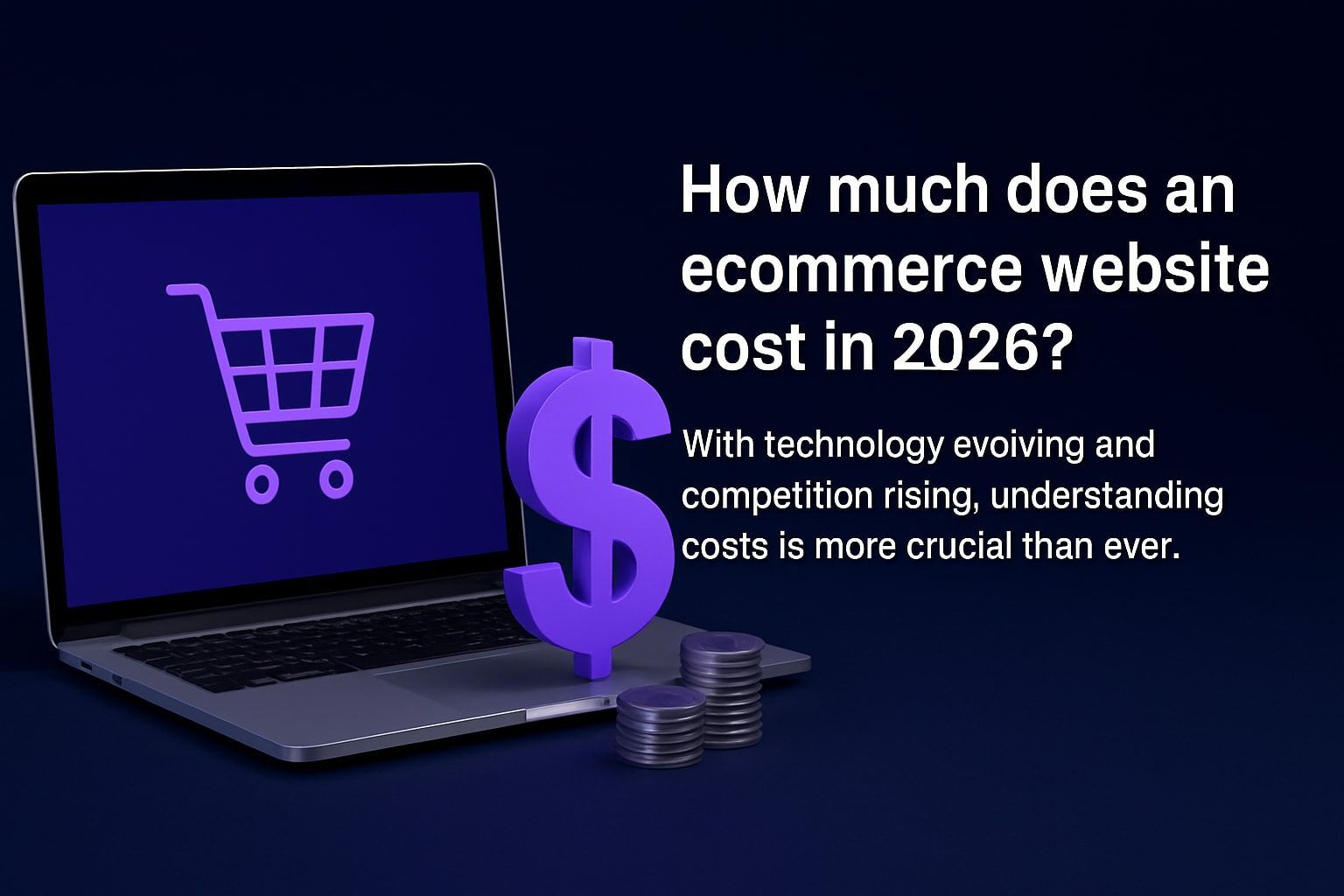Guide to Optimising Content on Your Website in 2025
In 2025, simply having content on your website is no longer enough to capture attention or drive results. Search engines and users alike now demand smarter, more strategic optimisation that adapts to rapid changes in digital trends.
This guide is your roadmap to unlocking the full potential of content on your website. Whether you're aiming for higher rankings, deeper engagement, or increased conversions, you'll find practical steps tailored to the evolving digital landscape.
You'll discover the latest SEO trends, learn how to meet new quality standards, harness the power of AI-driven optimisation, and upgrade the technical foundation on your website. Each section is designed to help you future-proof your content and outperform competitors.
Ready to transform on your website into a high-performing, future-ready digital asset? Dive in and take the first step toward optimization that works in 2025.
Understanding Content Optimisation in 2025
Staying ahead in digital marketing means continually evolving how you optimize content on your website. In 2025, optimisation is no longer about guesswork or outdated tactics—it’s about understanding shifts in algorithms, user expectations, and emerging technologies.
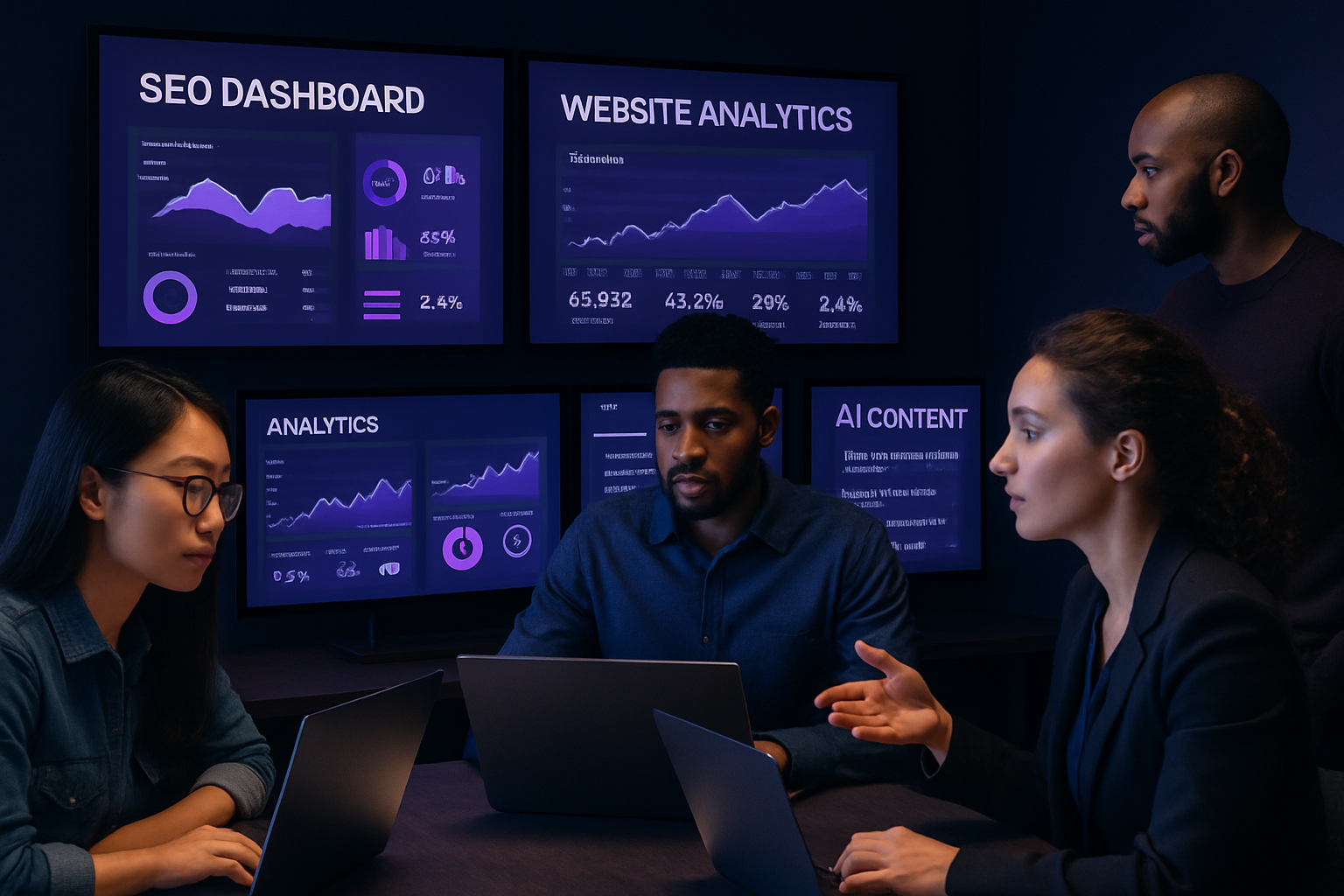
The Evolution of Content Optimisation
Over the past decade, content optimisation has transformed from a focus on keyword stuffing to a more holistic, intent-driven approach. Google’s recent updates, including Search Generative Experience and EEAT, reward content that demonstrates expertise and relevance. AI and machine learning now play a central role in ranking, analysing the context and value of every page on your website.
Today, optimising means addressing real user needs. For example, rather than simply listing the “10 Best Shoes,” content now guides users through decisions with “How to Choose the Right Running Shoes for You.” This evolution ensures that content on your website is not only discoverable but also genuinely helpful.
Key Ranking Factors in 2025
Ranking on your website depends heavily on user experience and technical performance. Google emphasises Core Web Vitals, measuring how quickly pages load and how stable they are. Semantic search and natural language processing help search engines understand meaning, not just keywords. Mobile-first indexing and speed remain crucial.
Structured data and schema markup boost visibility by helping Google interpret your content accurately. For a deeper dive into emerging ranking factors and strategies, check out the Top SEO Trends for 2025. In 2025, Google’s AI analyses intent, context, and user satisfaction to determine which content deserves to rank on your website.
User Intent and Search Behavior Trends
User intent shapes every optimisation decision on your website. Voice search and conversational queries are growing, demanding content that answers questions in a natural, accessible way. Satisfying informational, navigational, and transactional intent is more important than ever.
Personalisation and localisation also play a major role. Users expect results tailored to their location and preferences, so optimising for “near me” and contextual queries is essential. This shift requires anticipating what users want and ensuring your content on your website delivers exactly that.
Content Types That Dominate in 2025
In 2025, the most successful content on your website is dynamic and engaging. Video, interactive tools, and multimedia integration are in high demand. Long-form, authoritative guides continue to perform well, but concise, actionable posts are also valued for quick answers.
User-generated content and community engagement add authenticity. The rise of video explainers and interactive infographics is reshaping how information is consumed on your website. Experimenting with these formats can set your site apart.
Statistics and Industry Insights
The data below highlights which content formats drive the most engagement on your website in 2025:
| Format | Avg. Engagement Rate | Conversion Rate |
|---|---|---|
| Video | 68% | 5.2% |
| Interactive | 73% | 6.0% |
| Long-form | 62% | 4.8% |
| User-Generated | 58% | 4.2% |
Industry benchmarks show bounce rates dropping below 40% for sites prioritising multimedia and technical optimisation, while dwell times and conversions continue to climb.
Step 1: Conducting a Comprehensive Content Audit
Before you can optimise content on your website for 2025, you need to know what’s working and what’s holding you back. A thorough content audit uncovers these insights, guiding your SEO and content strategy toward higher visibility and engagement.
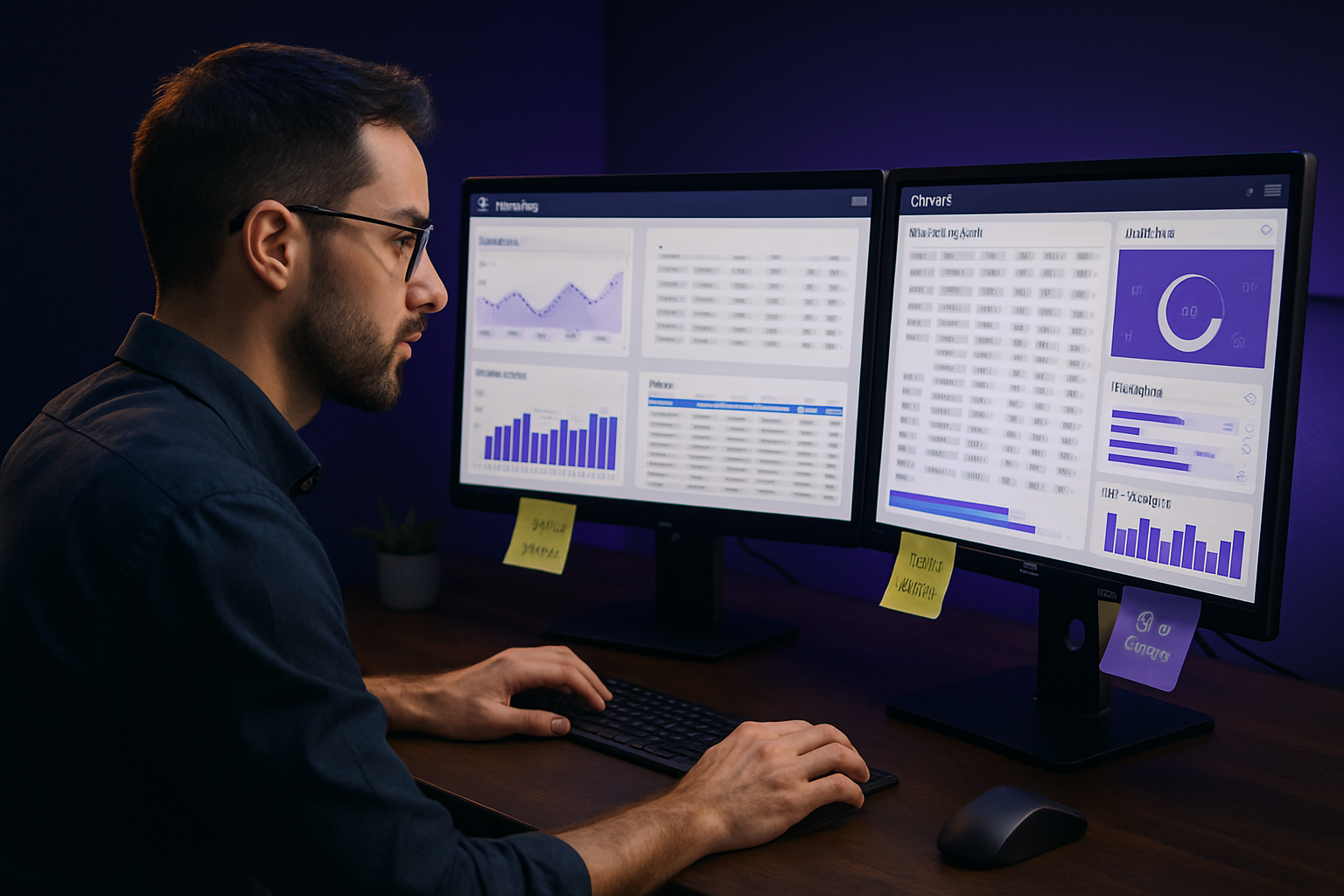
Why a Content Audit is Essential
A content audit is the diagnostic checkup for your site’s health. If you haven’t reviewed content on your website in the past year, you could be missing opportunities or letting outdated information drag down performance.
By auditing, you identify underperforming pages, content gaps, and misaligned messaging. For example, a SaaS company revamped content on their website and saw a 40% boost in organic traffic after fixing outdated posts.
Regular audits also ensure your content supports current business goals and meets evolving user needs. With search algorithms changing rapidly, a proactive audit keeps your site ahead of the curve.
Tools and Methods for Content Auditing
Effective audits combine data analysis with hands-on review. Start by mapping all content on your website using a spreadsheet or automated crawler.
Leverage analytics platforms like Google Analytics 4 and Search Console to track engagement, traffic, and conversions. For deeper insights, consider Advanced SEO tools for websites to uncover technical issues and content opportunities.
AI-powered audit tools can quickly flag duplicate content, broken links, and keyword gaps. Document findings to prioritise next steps. Mixing manual review with smart technology ensures a comprehensive content audit.
Evaluating Content Quality and Relevance
Quality matters more than ever on your website. Review each piece for accuracy, depth, and authority. Does the content answer current user questions? Is it up-to-date?
Look for outdated facts, broken links, or thin posts. For instance, pruning or updating old posts from 2018 can prevent ranking drops. Check if pages reflect your brand’s expertise and trustworthiness.
Use a checklist to assess EEAT signals, factual correctness, and clear calls to action. This step ensures your content remains both competitive and credible.
Identifying SEO and UX Issues
A strong audit uncovers technical and user experience issues on your website. Scan for duplicate content, slow load times, and poor navigation.
Review internal linking structures—are pillar and cluster pages easy to find? Poor UX can drive users away before they engage.
A table can help break down common issues:
| Issue | Impact | Solution |
|---|---|---|
| Duplicate content | Ranking penalties | Consolidate pages |
| Thin pages | Low engagement | Expand content |
| Slow speed | High bounce rates | Optimise images |
Addressing these problems improves both SEO and satisfaction.
Prioritising Content for Optimisation
Not every page on your website needs equal attention. Use metrics like traffic, conversions, and backlinks to rank pages by impact.
Create an action plan: update strong performers, merge or delete weak pages, and fill content gaps. For example, focus first on high-traffic, low-converting pages to maximise ROI.
A prioritised roadmap ensures you invest time where it counts most. Align your content updates with business objectives for sustained growth.
Documenting and Tracking Progress
Track your audit’s impact by setting up dashboards and KPIs. Use monthly reporting templates to monitor changes on your website, from rankings to engagement.
Document each update and result. This habit keeps your optimisation process transparent and repeatable, making it easier to adapt in the future.
Step 2: Creating High-Quality, User-Focused Content
To truly stand out on your website in 2025, you must go beyond basic content creation. High-quality, user-focused content is the foundation for building trust, driving engagement, and earning top search rankings. Let’s break down exactly how to elevate every piece of content on your website for the modern digital landscape.
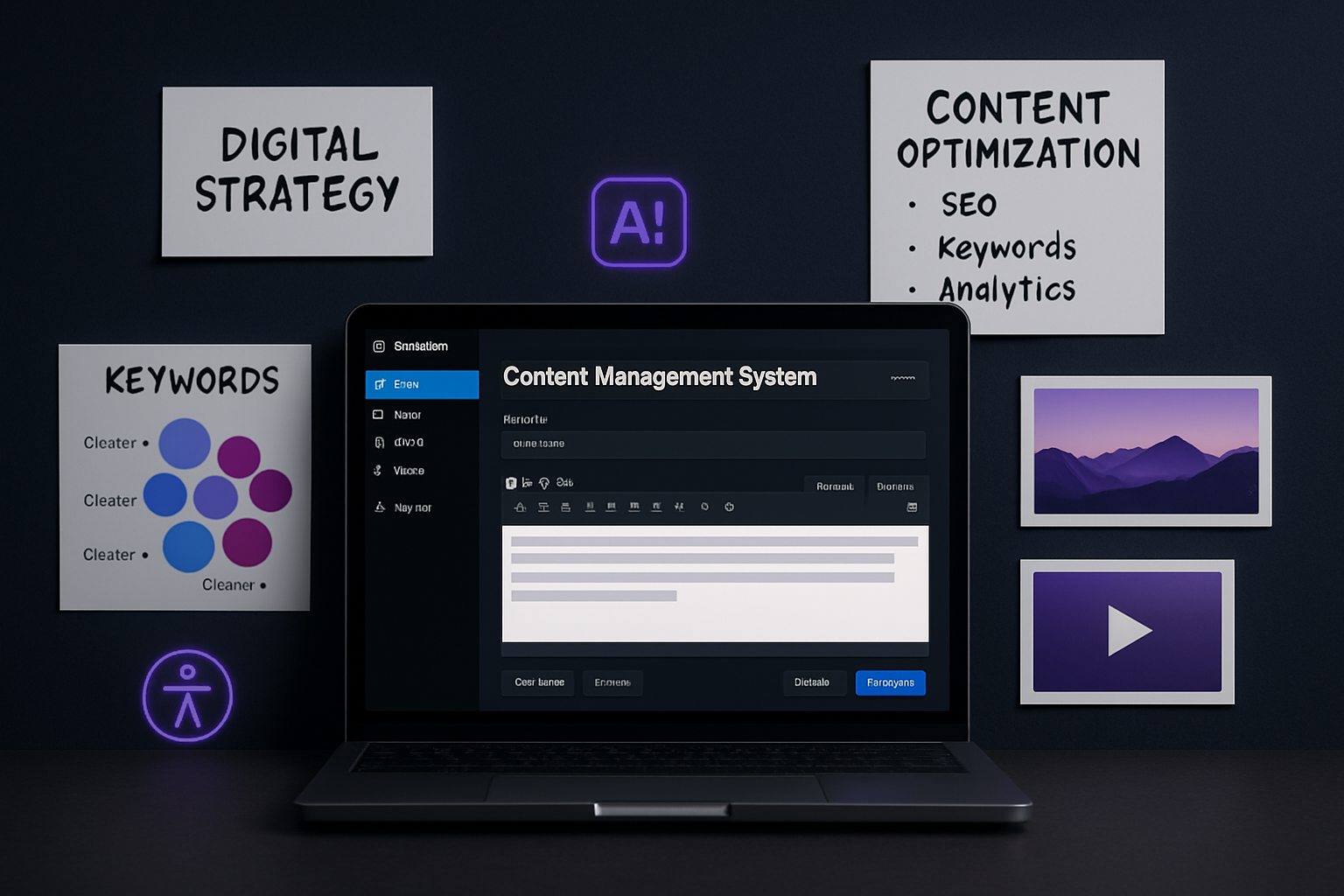
Defining “Quality” Content in 2025
Quality content on your website is more than just well-written text. In 2025, Google’s EEAT guidelines—Experience, Expertise, Authoritativeness, Trustworthiness—set the bar for what ranks. Content must demonstrate real-world experience and deep expertise, not just surface-level knowledge.
Modern users expect comprehensive answers to their questions. This means in-depth guides that fully address intent, supported by credible sources and up-to-date information. For example, a guide on running shoes should explain fit, materials, and injury prevention, not just list options. For more on how EEAT shapes content standards, see E-E-A-T and Content Quality in 2025.
Ultimately, prioritising quality on your website builds trust and encourages repeat visits.
Advanced Keyword and Topic Research
Keyword research in 2025 goes far beyond simple search terms. AI-powered tools can cluster related topics, uncovering the themes users truly care about on your website. This approach helps you identify content gaps and emerging trends faster than ever.
Leverage platforms like Google Trends and “People Also Ask” to spot new search behaviors. Look for patterns in questions and long-tail phrases that reveal intent. For example, instead of targeting “running shoes,” focus on “how to choose the best running shoes for flat feet.”
Regularly updating keyword research ensures content on your website stays relevant and competitive.
Crafting Compelling Headlines and Meta Data
Your headlines and meta descriptions are the first impression users get on your website. Craft them to be irresistible and informative. Use primary and secondary keywords naturally—avoid keyword stuffing, but don’t shy away from specificity.
Consider A/B testing different headline formats to see which drives higher click-through rates. For example, “Top 10 Tips for Website Optimisation” versus “How to Optimise Every Page on Your Website for 2025.”
Well-crafted metadata boosts both SEO and user engagement, making content on your website more discoverable and clickable.
Structuring Content for Readability and Engagement
The structure of content on your website is critical for keeping readers engaged. Break up text with clear headings, short paragraphs, and bullet points. Use visuals like images, charts, or videos to add context and keep attention.
Before-and-after content structure examples can show the value of these changes. For instance, compare a dense block of text with a version using subheaders, lists, and graphics—readers will always prefer the latter.
Remember, a well-structured layout makes on your website more accessible and enjoyable for everyone.
Optimising for Featured Snippets and Rich Results
Reaching the top spot on search results often means securing a featured snippet. Format content on your website with lists, tables, and Q&A sections to increase snippet eligibility.
Use schema markup to help search engines understand your content. For example, marking up a FAQ section can get your answers displayed directly in search results.
Optimizing for rich results not only increases visibility but also drives more qualified traffic to on your website.
Integrating Multimedia and Interactive Content
Multimedia elements are essential for engaging users on your website. Embed videos, podcasts, and infographics to illustrate complex ideas. Interactive tools like polls, quizzes, or calculators can boost time on site and encourage sharing.
For example, a service page featuring an interactive ROI calculator will keep visitors engaged longer. These features also signal to search engines that content on your website is valuable and dynamic.
Regularly updating and diversifying multimedia keeps your site fresh and appealing.
Ensuring Accessibility and Inclusivity
Accessible content on your website ensures everyone can engage, regardless of ability. Use descriptive alt text for images, maintain high color contrast, and enable keyboard navigation.
These improvements not only broaden your audience but also align with search engine best practices. For example, adding captions to videos and using clear language can make your content more inclusive.
Prioritizing accessibility on your website demonstrates social responsibility and opens your site to more visitors.
AI Tools for Content Creation and Optimisation
AI is transforming how content is created on your website. Leading AI writing assistants can generate outlines, suggest improvements, and even help with keyword optimization.
For instance, AI-generated drafts can speed up production, while automated editing tools ensure quality and consistency. Embrace these tools to keep content on your website ahead of the curve.
Staying updated with the latest AI advancements will help you maintain a competitive edge in 2025.
Step 3: On-Page SEO and Technical Optimisation
Optimising your website in 2025 means more than just adding keywords. It’s about creating a seamless experience for users and search engines alike. Let’s break down the essentials of on-page SEO and technical optimisation, so every page on your website works harder for you.
Optimising On-Page Elements
To boost visibility on your website, start with the basics: title tags, meta descriptions, and header tags. Each should include your target keyword naturally, but avoid stuffing. Think of on-page elements as signposts for both users and search engines.
- Use unique, descriptive titles for every page on your website
- Write compelling meta descriptions that prompt clicks
- Structure content with H1, H2, and H3 tags for clarity
Proper keyword placement ensures relevance, while semantic enrichment (using related terms and phrases) helps Google understand the context. For example, an optimised product page on your website might feature a clear title, concise meta description, and organised headings that guide visitors to take action.
Enhancing Internal Linking and Site Structure
A strong internal linking strategy on your website is like building well-marked paths in a park—users and search engines can easily find what they need. Topic clusters and pillar pages help organise content logically, while strategic anchor text boosts SEO.
- Link related articles and guides on your website for better navigation
- Use descriptive anchor text that reflects page content
- Group content into clusters around core topics
If you want to streamline your site’s structure and design, consider leveraging professional website templates to ensure your foundation is both user-friendly and technically sound. When you improve internal linking, you keep users engaged longer and help search engines crawl your site more efficiently.
Improving Core Web Vitals and Page Speed
Page speed and user experience are crucial ranking factors on your website. Google’s Core Web Vitals measure three key aspects:
| Metric | Threshold (Good) | What It Measures |
|---|---|---|
| Largest Contentful Paint (LCP) | ≤2.5s | Loading performance |
| First Input Delay (FID) | ≤100ms | Interactivity |
| Cumulative Layout Shift (CLS) | ≤0.1 | Visual stability |
| 4 | Dave | Hill |
Use tools like PageSpeed Insights to test performance on your website. Compress images, enable lazy loading, and minimise JavaScript to reduce load times. Fast, stable sites not only rank higher but also keep visitors from bouncing away.
Mobile Optimization and Responsive Design
More users are browsing on your website via smartphones and tablets than ever before. Adopting mobile-first design ensures your content looks and works great on any device. Responsive layouts, scalable images, and touch-friendly navigation are must-haves.
- Test your site on multiple devices and browsers
- Prioritise fast loading on mobile connections
- Use mobile-friendly menus and tap targets
Statistics show that a mobile-optimized experience on your website can significantly boost traffic and conversions, making this a non-negotiable in 2025.
Implementing Structured Data and Schema Markup
Structured data helps search engines understand the content on your website, enabling enhanced search results like rich snippets. Schema markup can be added for articles, FAQs, products, and more.
Here’s a simple example for a FAQ section using JSON-LD:
{
"@context": "https://schema.org",
"@type": "FAQPage",
"mainEntity": [{
"@type": "Question",
"name": "How do I optimize content on my website?",
"acceptedAnswer": {
"@type": "Answer",
"text": "Focus on user intent, technical SEO, and structured data to improve search visibility."
}
}]
}
Validate your markup with Google’s Rich Results Test tool. Implementing schema on your website can increase click-through rates by showcasing additional information directly in search results.
Securing Your Website and Building Trust
Security is foundational on your website. HTTPS, SSL certificates, and privacy compliance (like GDPR and CCPA) protect both you and your visitors. Display trust badges and make contact information easy to find.
- Always use HTTPS on your website
- Keep software and plugins updated
- Add clear privacy policies and terms
Sites with visible security measures foster trust, while those showing warnings see higher bounce rates. Protecting user data is not just best practice—it’s essential for ranking and reputation.
Monitoring and Fixing Technical SEO Issues
Regular audits on your website help catch and fix technical problems before they impact performance. Use tools to scan for crawl errors, broken links, and improper redirects.
- Schedule monthly technical SEO checks on your website
- Fix 404 errors and update outdated redirects
- Monitor sitemap and robots.txt for accessibility
A proactive approach ensures your site stays healthy, providing a smooth experience for both users and search engines.
Step 4: Leveraging AI and Automation for Content Optimisation
In 2025, artificial intelligence is transforming how you optimise content on your website. Businesses that harness AI and automation are not just keeping up—they’re setting the pace in an increasingly competitive digital world.
The Role of AI in Content Strategy
AI is no longer a futuristic concept; it’s central to strategy on your website. Today’s leading platforms use AI to analyze search trends, predict user intent, and even generate content outlines in seconds. This means you can identify opportunities before the competition does.
For instance, with AI Tools Reshaping Content Creation, you can explore over 70 solutions that help you optimize and scale content efficiently. AI-driven research tools uncover emerging topics, making it easier to meet user needs on your website.
Automating Routine SEO Tasks
Automation tools are streamlining repetitive SEO tasks on your website. Instead of manually updating meta tags or resizing images, AI-powered solutions handle these updates at scale.
Common automated tasks include:
- Internal linking suggestions
- Meta description generation
- Image optimisation and compression
- Scheduling regular content audits
By automating these processes, you save valuable time and ensure consistent optimisation on your website, freeing up resources for creative projects.
Personalisation and Dynamic Content Delivery
AI is personalising the user journey on your website like never before. Algorithms analyse visitor behavior, location, and preferences to deliver tailored experiences in real time.
Dynamic content blocks can show personalised product recommendations, location-based offers, or even custom headlines. This adaptive approach increases engagement and conversions on your website, making each visitor’s journey unique and relevant.
Content Performance Tracking and AI Insights
Real-time analytics powered by AI provide actionable insights on your website. These systems monitor traffic patterns, user interactions, and content performance, then recommend optimisations instantly.
For example, AI can suggest headline tweaks or layout changes that boost engagement on your website. Automated A/B testing means you can iterate faster, responding to trends as they happen.
Integrating AI Tools into Your Workflow
Adopting AI tools is now essential for teams working on your website. Choose platforms that fit your needs—whether for content generation, SEO analysis, or workflow automation.
Train your team to leverage these tools effectively. Many businesses report increased productivity and improved content quality after integrating AI into their daily processes on your website.
Avantiy: AI-Powered Website Optimisation Platform
Avantiy is redefining how you build and optimise content on your website. Its AI content assistant, drag-and-drop editor, and built-in SEO tools make professional site management accessible to everyone.
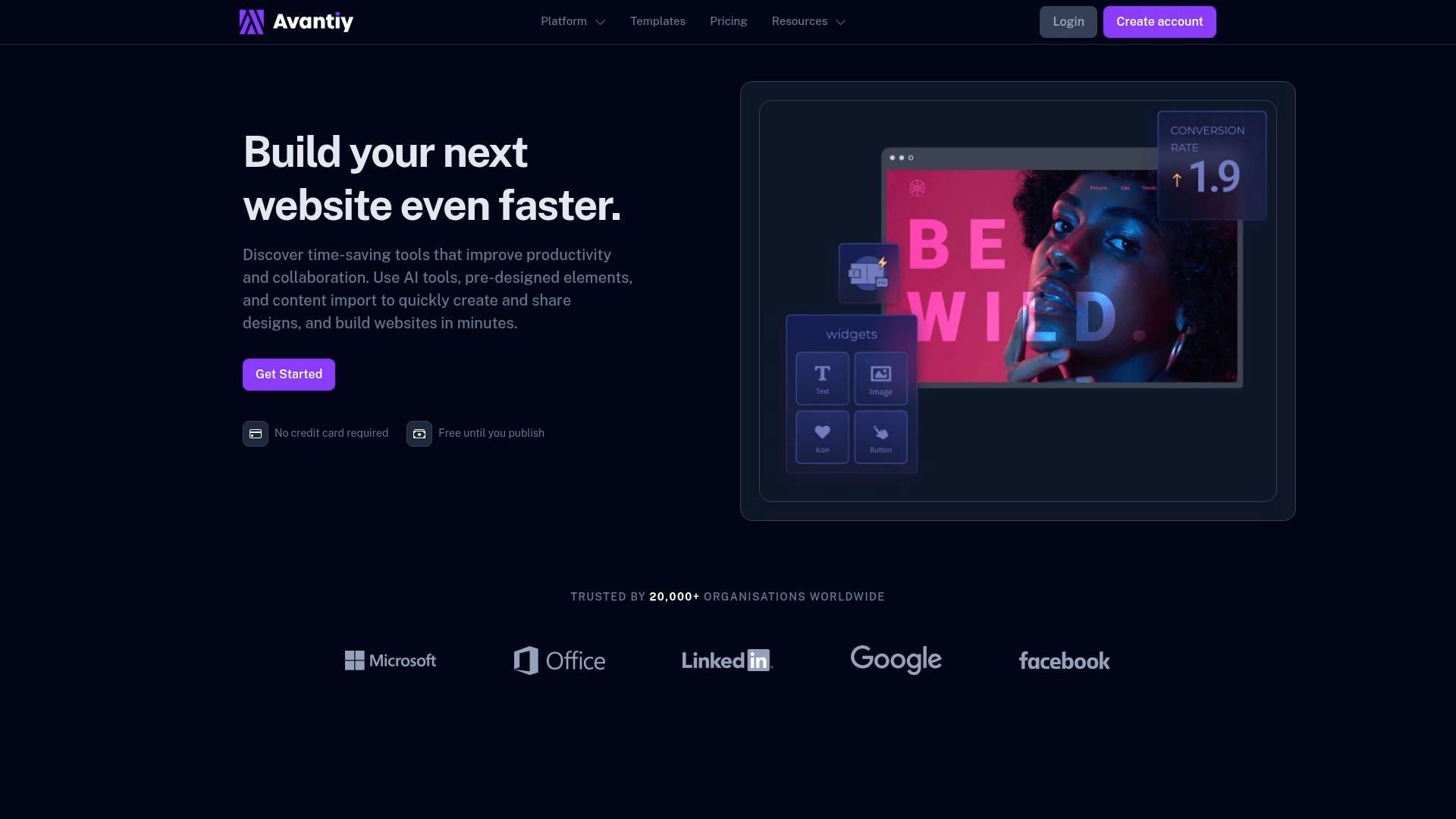
With customisable templates, dynamic pages, and integrations with 400+ apps, Avantiy accelerates site creation and ensures industry-leading performance on your website. Whether you’re a beginner or a pro, Avantiy helps you stay ahead of the curve in 2025.
Step 5: Measuring, Testing, and Iterating for Continuous Improvement
Continuous improvement is the heartbeat of successful content optimisation on your website. As you implement your strategies, tracking progress, testing new ideas, and making data-driven updates ensure your efforts keep pace with evolving user needs and search engine algorithms.
Setting Up Analytics and Tracking
To optimise content on your website, begin by setting up robust analytics. Integrate Google Analytics 4, Search Console, and heatmap tools to capture granular insights. Define key performance indicators (KPIs) such as bounce rate, conversion rate, and average session duration.
A simple KPI tracking table can help:
| KPI | Goal | Current Value |
|---|---|---|
| Bounce Rate | < 40% | 47% |
| Avg. Session Duration | > 2 min | 1:45 |
| Conversions | +15% MoM | 10% MoM |
Tracking these metrics on your website empowers you to spot trends and quickly identify areas needing improvement.
Running A/B and Multivariate Tests
Experimentation is essential for boosting performance on your website. Use A/B and multivariate testing to compare headlines, layouts, calls to action, and visuals. Start with one variable at a time for clarity.
For example, test two versions of a landing page headline. Analyse which drives more signups. Use statistical significance to validate results before making permanent changes on your website. Regular testing uncovers small tweaks that lead to significant gains.
Gathering and Implementing User Feedback
Direct feedback from real users reveals what’s working on your website and what isn’t. Deploy on-site surveys, feedback widgets, and usability tests to gather actionable insights. Ask specific questions about navigation, content clarity, and feature usefulness.
Once you’ve collected feedback, prioritise improvements that align with both user needs and business goals on your website. For example, updating FAQs or adding tutorial videos based on user suggestions can boost satisfaction and engagement.
Monitoring SEO and Content Performance
Keep a close eye on your website’s SEO health. Track keyword rankings, organic traffic, and backlink profiles using dashboards and alerts. This helps you react swiftly to sudden drops or spikes.
AI-powered assistants, like the AI website content assistant, streamline monitoring and surface optimization opportunities. Consistent tracking is vital for sustaining and improving performance on your website, ensuring your content stays visible and competitive.
Iterative Content Updates and Refreshes
Content on your website is never truly finished. Schedule regular reviews to update outdated stats, enhance visuals, and add new examples or multimedia. Prune low-performing or irrelevant content to keep your site lean and authoritative.
Refreshing evergreen posts maintains their top rankings and attracts repeat visitors. Use performance data to prioritise which pages need updates first, making every refresh impactful.
Staying Ahead of Algorithm Updates and Industry Trends
Search engines and user expectations evolve rapidly. Stay proactive by following trusted SEO news sources, joining industry communities, and attending webinars. Adapt your strategy on your website to new ranking signals, features, and emerging best practices.
Monthly strategy reviews let you pivot quickly after algorithm updates, keeping your content aligned with both audience needs and search engine requirements.
Future-Proofing Your Content Strategy
Preparing for the future means ensuring that every piece of content on your website is ready to evolve with new trends, technology, and user expectations. Let’s explore how you can build a strategy that keeps you ahead—no matter what changes come your way.
Adapting to Emerging Technologies and Platforms
Innovation never stands still, and neither should the approach you take on your website. In 2025, search engines, devices, and content platforms are rapidly evolving. Early adoption of interactive formats, voice search, and even AI-generated video can give you a jump on competitors.
For example, AI’s growing influence is transforming how content is created and consumed. If you want to stay ahead, keep an eye on AI's Impact on Media and Entertainment to see how these trends could shape content on your website as well.
Building an Agile, Data-Driven Content Team
Success on your website in 2025 demands a team skilled in analytics, AI tools, and cross-functional collaboration. Encourage ongoing learning—hold workshops on new optimization tools, and foster open communication between SEO, content, UX, and development roles.
Teams that adapt quickly to data insights can pivot faster, spotting opportunities and avoiding pitfalls. Make regular team reviews and upskilling part of your content culture.
Prioritising Ethical Content Practices
Trust is everything on your website. Always be transparent about how your content is created, especially if AI tools are involved. Avoid misleading tactics or misinformation—users and search engines alike value authenticity.
Disclose when content is AI-generated and uphold responsible AI use. Ethical standards not only protect your brand but also foster lasting audience loyalty.
Diversifying Content Distribution Channels
Relying solely on your website for content exposure limits your reach. In 2025, leverage a mix of social media, email newsletters, and syndication platforms to share your message.
Repurpose valuable content into different formats—turn blog posts into videos or infographics, for example. Building owned communities, like a newsletter or forum, helps strengthen your brand’s ecosystem.
Maintaining Flexibility Amidst Change
Change is constant, whether it’s an algorithm update or a new social platform. On your website, embrace experimentation and rapid iteration. Regularly review your content strategy and encourage feedback from your team and audience.
A flexible mindset lets you test new ideas, pivot quickly, and keep your site aligned with shifting trends. Monthly strategy sessions can make all the difference.
Key Takeaways and Action Steps
To future-proof content on your website, focus on these essentials:
- Embrace new tech and platforms early.
- Build a skilled, collaborative team.
- Prioritize transparency and ethical standards.
- Expand your content’s reach across channels.
- Stay agile and review your strategy regularly.
Start implementing these steps now to keep your website at the forefront in 2025 and beyond.
Ready to put these 2025 optimisation strategies into action? You don’t have to tackle it all alone—Avantiy’s AI-powered website builder is designed to help you create, optimise, and grow your site with ease, no coding required. Whether you’re starting from scratch or refreshing your content, you can use intuitive tools, customisable templates, and built-in SEO features to future-proof your site in just a few hours. Let’s take the next step together and turn your website into a high-performing, search-friendly destination.
Get Started for Free
Start building your new website today
No credit of debit card required start building today



